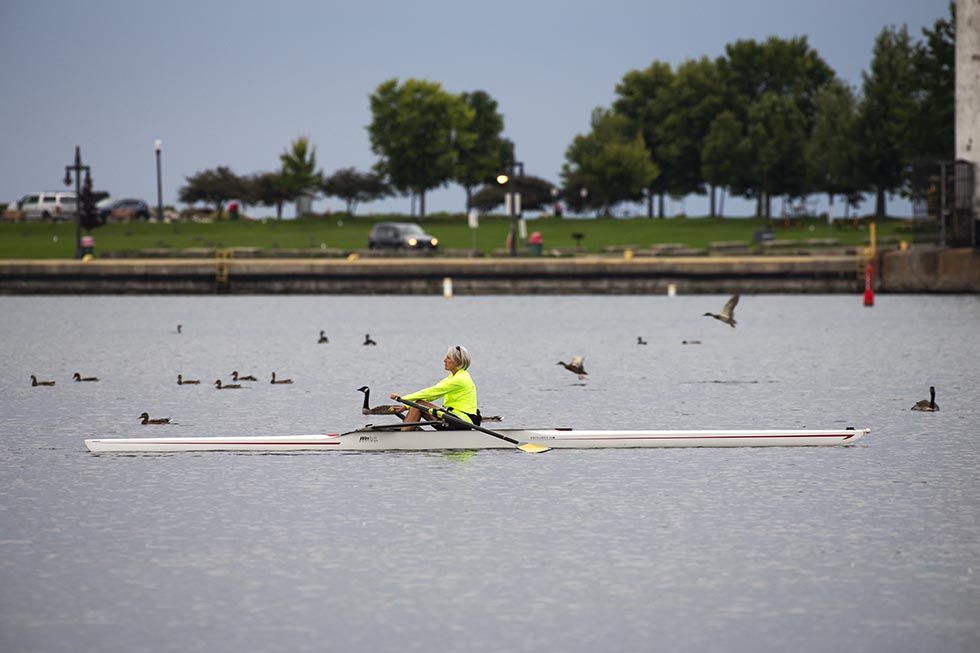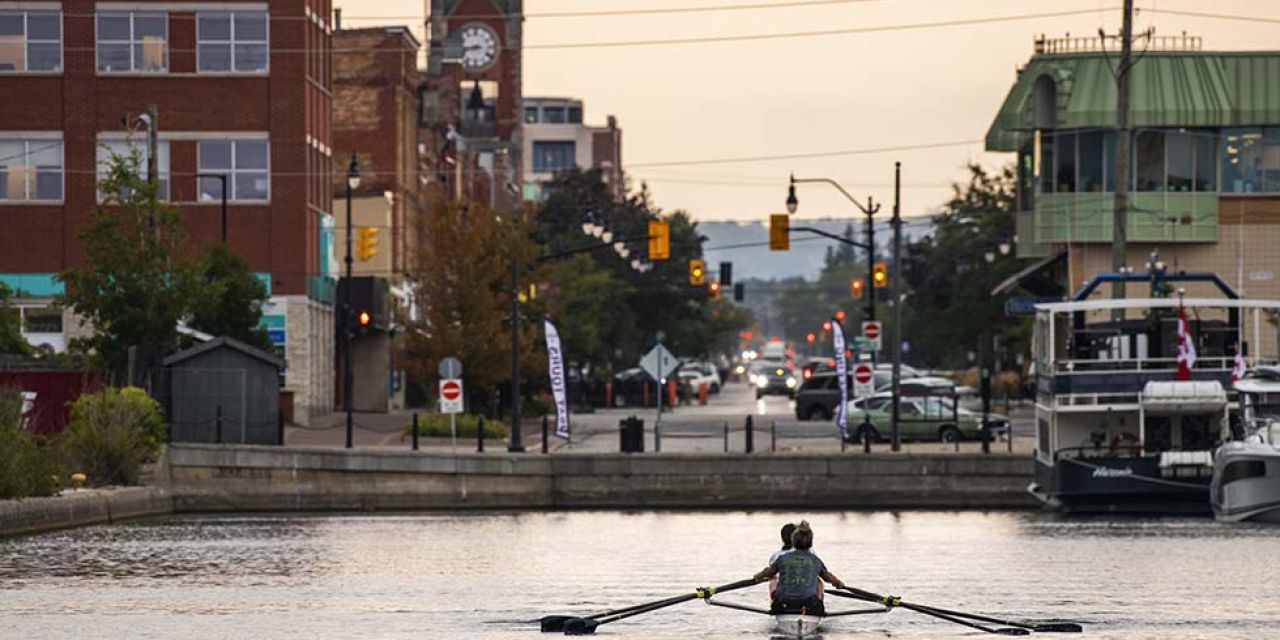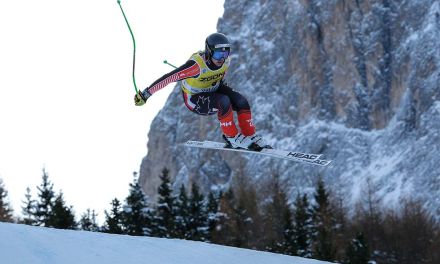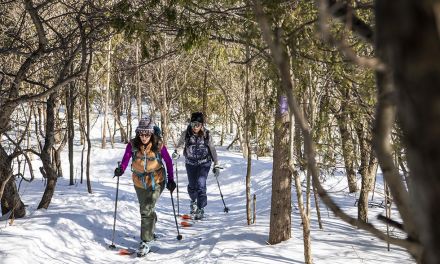Different Strokes
By Kate MacLennan photography by Clay Dolan
If there’s a more dichotomous physical activity than rowing, one would be hard pressed to name it. Rowing is challenging but simple. It’s physically taxing and mentally onerous. It’s satisfying and frustrating. It’s blistered hands and sculpted legs. It energizes and deprives one of rest. Some may think it sounds like parenting, which wouldn’t be an unfair comparison when you also consider the enormous role the greatest mother—nature—plays when it comes to rowing on Georgian Bay.
Despite all this—or perhaps owing to it—rowing is growing in popularity in North America. There’s been a rise of rowing-machine-only studios and gym classes, more universities are offering rowing as part of their curriculum, and predominant rowing organizations are reporting a steady increase in their membership. As interesting, are the demographics of those getting behind the oars. In 2020, of the 11,776 rowers registered with Rowing Canada, 44.4 percent live in Ontario and almost 61 percent of those identify as female. Collingwood Rowing Club says its members have ranged in age from 12 to 90, while USRowing, the sport’s governing body south of the border, says 14 percent of its rowers are over the age of 50. From beginners to endurance athletes, rowing’s reputation for delivering a low impact, full-body workout and free-flow of stress-relieving endorphins is out there.
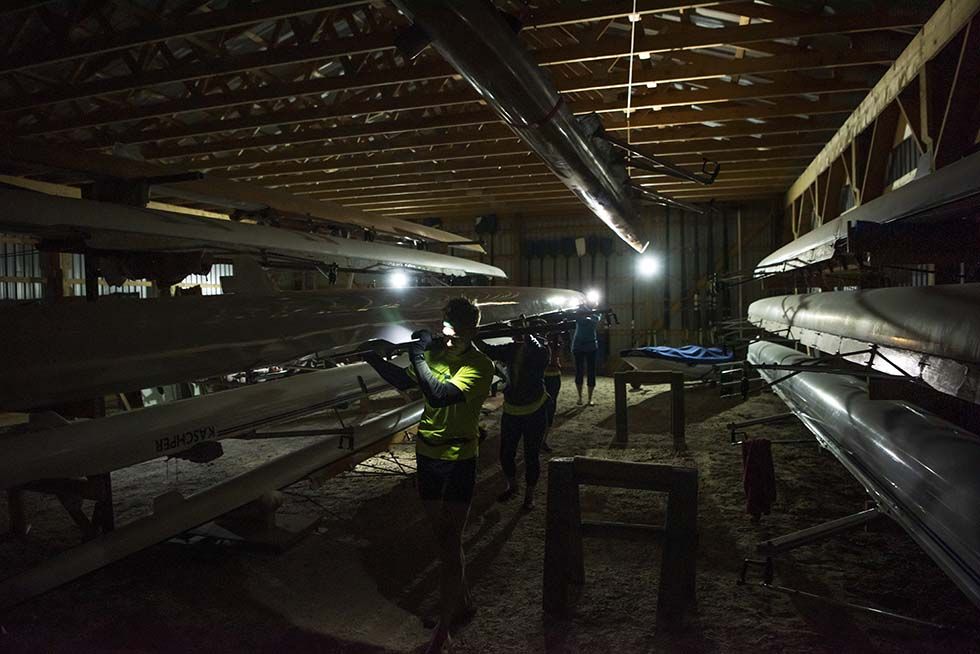
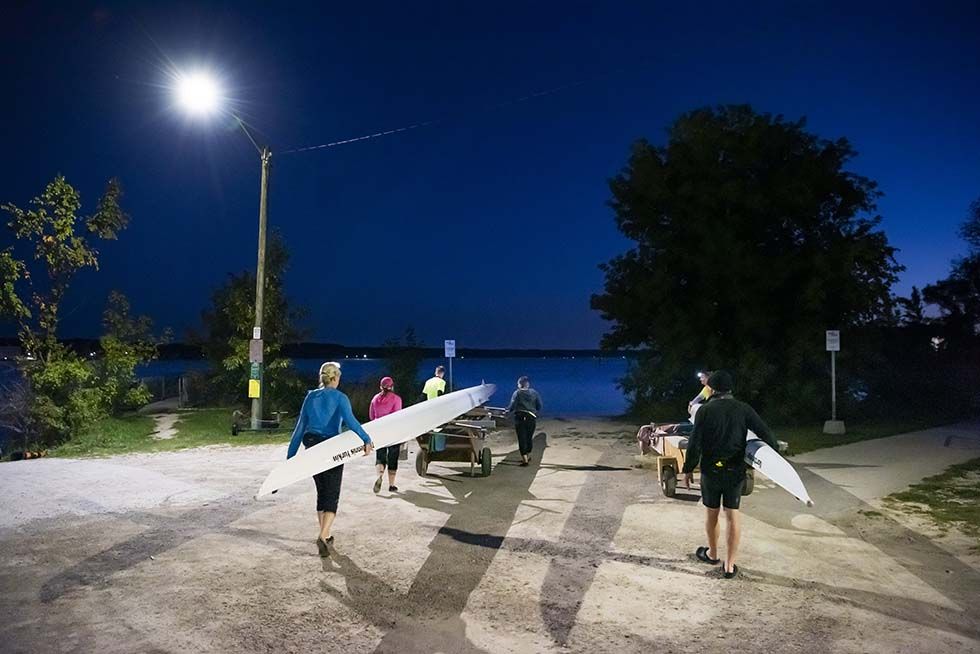
The workout is what first got Michele Mannerow into a boat about 15 years ago. Mannerow, a financial advisor and Secretary Treasurer of the Owen Sound Rowing Club, says that she has taken up a new sport every five years or so since she was in her 30s—hockey, kayaking, mountain biking, and trail running among them. She’d grown up sailing on Georgian Bay, though, so the water has always held a special allure. “We live in Leith, and I would see the rowing shells out on the lake. I kept telling my husband how much I’d love to try it, and one day he came home with a phone number and said, ‘Call them.’” These days, she says, the more she can row the less she’ll do the other sports she’s embraced. “I like kayaking, but it’s not nearly as much fun as rowing, and it’s nothing like it,” she says.
While it’s hard to narrow down rowing’s most unique quality in the world of water sports to just one thing, balance is one of them. “I’ve canoed, I’ve sailed, I’ve kayaked, but the rowing shell is the most tippy boat I’ve ever sat in. It’s like sitting on a knife’s edge,” says Norm Bell, a hydrogeologist and geoscientist, and President of the Owen Sound Rowing Club. In that capacity, rowing on water is nothing at all like rowing on a sturdy machine at the gym—an “erg” as rowers call it (short for ergometer). Neither is it all about arm strength, contrary to popular belief. Bell says, “The reality is it’s 80 percent legs and core. The power comes from your legs. You’re blasting off using the biggest muscles in your legs, then recovering with your arms.”
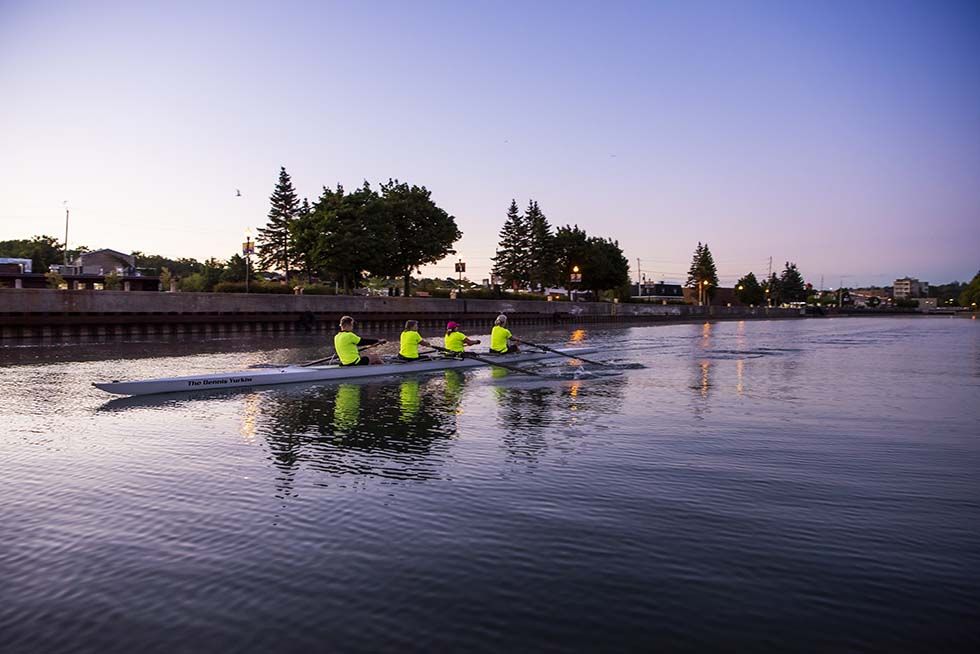
If descriptors like “power” and “blasting off” come as a surprise given the grace and fluidity in which the boats glide by, consider that when on the water, the Owen Sound team utilizes a training method similar to high intensity interval training (HIIT) or Tabata. Crews will row four kilometres out and four back, says Bell, explaining, “You go hard for 20 seconds, rest for 10, then hard for 20 seconds, rest for 10, et cetera until you turn the boat. The cardio pump is pretty good.”
Kate McLachlin, a family physician who also practices palliative care, has been rowing and coxswaining since she was a teenager. She has been a member of the Collingwood Rowing Club since 2007. “There are lots of people here who are active and have been active their whole lives and they can’t do things like running anymore because of their age—their joints hurt. But they can row and get a full body workout. We see a lot of people cycling and I think it’s for the same reason.”
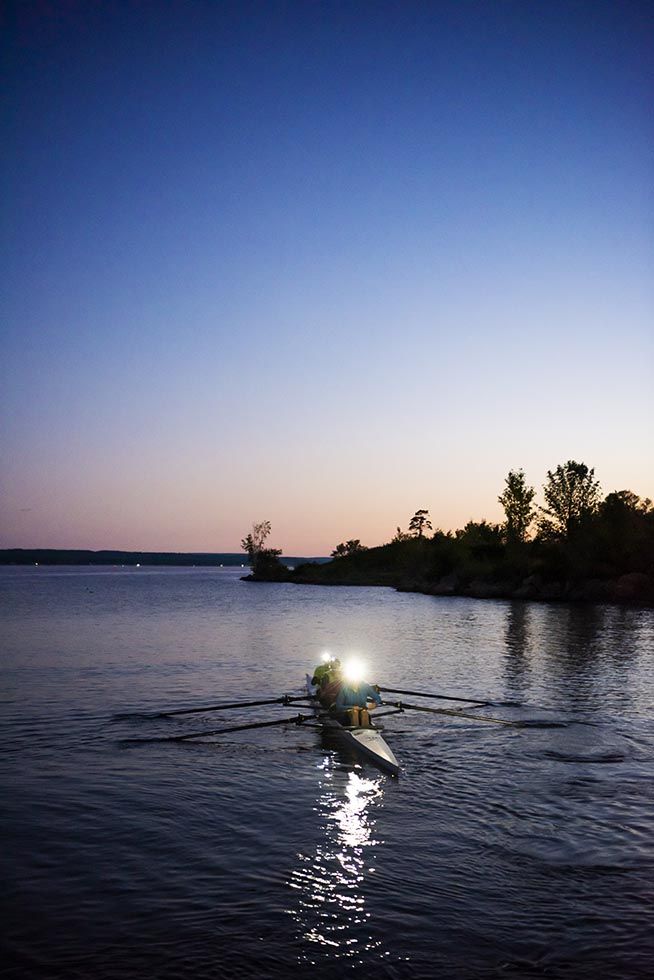
McLachlin says the Collingwood Rowing Club jokes about being a “pick-up club” because the vibe is so non-competitive. “It’s awesome to have a big crew to row together, and one of the reasons I’m still hanging around this club isn’t just because I love rowing, but because the people are awesome and it’s fun to go out on the water and come together as a group,” she says. “But I’ve been doing this for almost 30 years and with every stroke I’m still thinking, ‘Head forward, shoulders down.’ It’s like a ballet on water because there’s such precision to it, and you have to focus, and concentrate, and be really conscious of the stroke. Getting the perfect stroke is this ongoing challenge, but when you get it, it feels so awesome you just want to do it again.”
Boats typically have one, two, four or eight people. In sweep rowing, each rower has just one oar, and the boat can also hold a coxswain, a sort of on-boat-coach who steers the boat and calls the strokes. Timing is everything. Every oar must dip into the water, pull through it, then reset with total precision. “There’s a lot of dynamics at work in order to get four or eight people out on the water, stroking together,” says Bell. “You’re trying to be the same stroke as the other people, then respond to a faster stroke when your coxswain screams that you have to go faster, while still trying to see if the other people have anything left in order to call the faster stroke… it’s a real story of determination.”
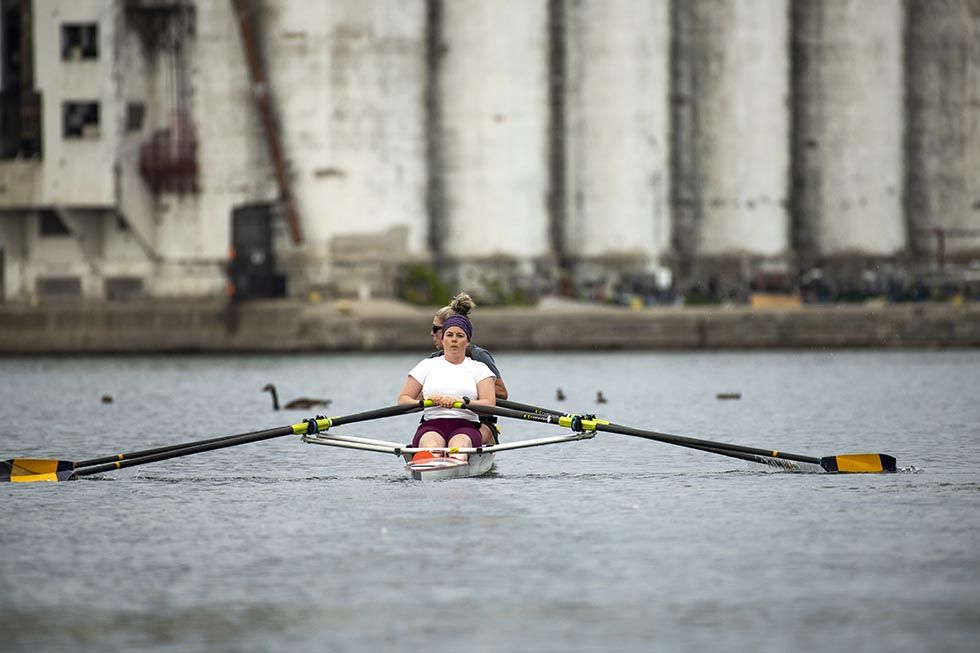
To catch Georgian Bay calm almost always means very early mornings, before thermal winds come up. “That’s a frustrating part, how weather dependent it is. We’ve had weeks I’ve called ‘Yahtzee’ weeks where I was rowing five out of five weeks, but that’s not usual. This summer wasn’t great. We’ve certainly raced banks of fog in,” says Mannerow.
The Bay presents other challenges, too. In late May, when the season starts, the water is frigid, which makes wet launches uncomfortable, and tipping the boat a potential disaster. In October, it doesn’t get light until close to 7am, making getting out on the bay and then to work on time a mission. Yet, every rower will attest: it’s always worth the effort.
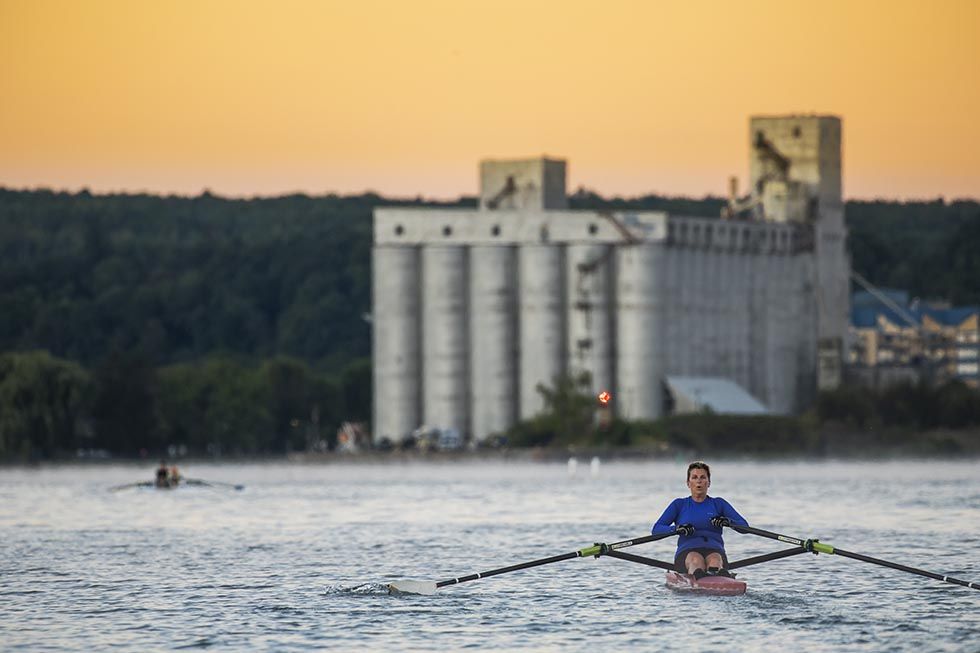
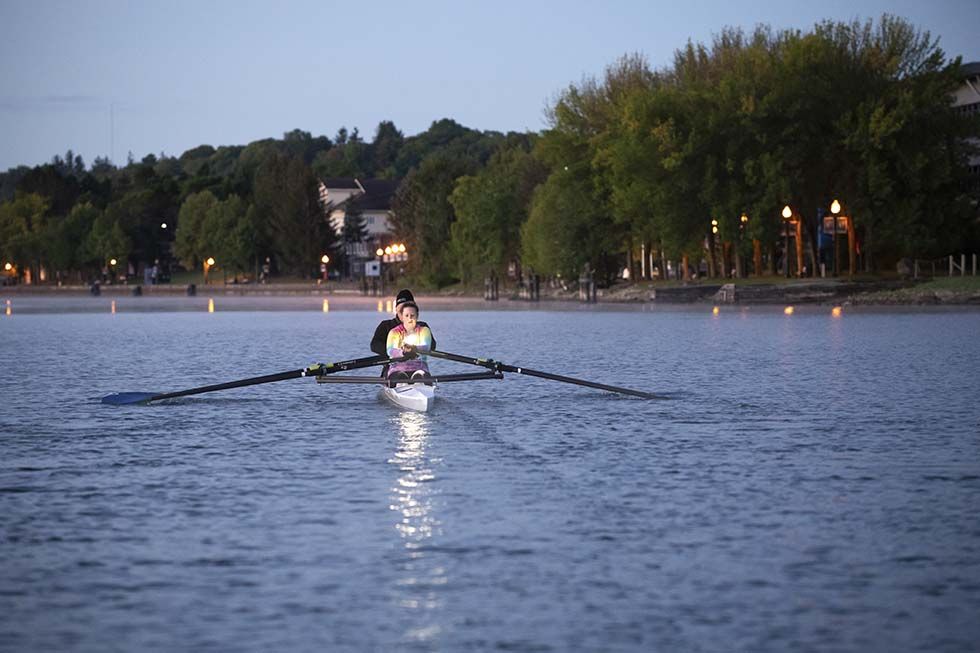
“We’ve got a great harbour, and in the mornings it’s good water for the most part in the mornings that’s pretty easy to navigate. The sun rising and setting over the Escarpment is absolutely stunning. On really flat days we go all the way to the lighthouse, and I can’t tell you how many times we’ll get to the top of the bay and stop and breathe and just enjoy the amazing view,” says McLachlin.
“Elation” is the word Bell uses to describe those early hours out on the water, watching the day break over the bay. “There’s some pretty big sighs when you get out on that flat calm. It’s a pretty rich experience and definitely a glad-to-be-here moment,” he says, before adding, “But then, you can’t take your hand off the oar to stop and stare because there are three other people stroking, so you have to keep the pace.” In rowing, the dichotomy always persists.
